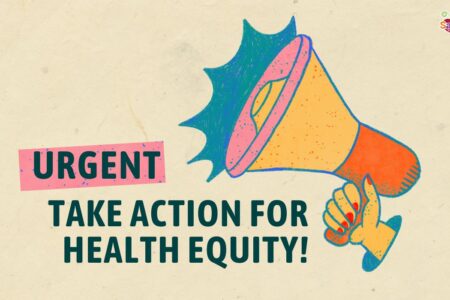
Share On Social!
Research suggests that men, regardless of race/ethnicity, are generally less likely to go to the doctor than women.
But some men who value masculinity, such as Latinos with the “machismo” mindset, may be even less likely to seek routine medical care compared to their peers.
Let’s explore more reasons why Latino and all men are less likely to go to the doctor, the consequences of delaying healthcare, and how to help men get the care they need.
Exploring the Machismo Mindset of Latino Men
Latinos as a whole face many systemic barriers to healthcare, including a lack of access to affordable health insurance, discrimination and physician implicit bias, lack of access to culturally competent care, and immigration status fears.
But there could be an additional barrier to healthcare for some Latino men called “machismo,” meaning a strong sense of masculinity.
Machismo is a common part of Latino culture and can impact how Latino men think of themselves and interact with others.
Latino men with the machismo mindset may avoid routine medical screenings because they feel they must appear “brave and self-sufficient,” Diana Sanchez, chair of the psychology department at Rutgers University, told the American Heart Association.
In other words, going to the doctor for either mental or physical health can translate as weakness or vulnerability for Latino men.
Further, even if they do visit the doctor, machismo may prevent Latino men from communicating honestly once they are there.
Latino men may think, “I have to put on this front, and I have to be consistently strong. I can’t be seen as weak. I can’t be seen as emotional. Because if I am, I’m going to lose social status,” Mary Himmelstein, an assistant professor in the department of psychological sciences at Kent State University in Ohio, told the American Heart Association.
Other Reasons Men Avoid Medical Care
But why are men in general less likely to visit the doctor compared to women?
Beyond machismo and the healthcare barriers described above, there may be other social factors that impact the likelihood of Latino and all men getting routine medical care.
For instance, women are encouraged to seek routine healthcare from the onset of puberty, which may help “socialize” them to the idea of visiting the doctor regularly.
Young men and boys, on the other hand, are not as socialized to visiting the doctor, “… except in instances when boys play organized sports, and they have to get a physical,” Wizdom Powell, director of the UConn Health Disparities Institute in Hartford, Connecticut, told the American Heart Association.
Further, Latinos and all men might be (dare we say it?) legitimately scared of going to the doctor.
According to a 2016 online survey by Orlando Health system, the top three reasons why men don’t go to the doctor include being too busy to go, they are afraid of finding out what might be wrong with their health, and they don’t want to get uncomfortable body exams, such as a prostate exam.
Consequences of Delaying Care
No matter the reason for avoiding the doctor, there can be serious consequences for delaying healthcare.

As previously mentioned, Latinos already face an array of systemic healthcare barriers that contribute to health disparities, including increased rates of cancer, diabetes, Alzheimer’s disease, and obesity, compared to their white peers.
So, adding delayed care to the mix can certainly be detrimental to Latino health.
For instance, Latino men may have lower rates of prostate cancer than white men, but they are more likely to die from the disease because they are less likely to get “timely, high-quality treatment,” according to the American Cancer Society.
Latino men also die from HPV-related throat cancer at higher rates than their white counterparts, regardless of the stage of diagnosis or the type of treatment they receive – which highlights just how important it is to get regular check-ups.
Exactly how often should Latino and all men see the doctor?
It varies by age and family health history.
Dr. Jamin Brahmbhatt of the Orlando Health system offers a full outline of when men should go to the doctor and what to expect when they visit, from age 20 and up.
“If you’re ever worried about a potential medical issue at any age, no matter when you received your last exam, go get checked,” Brahmbhatt writes. “There’s never a wrong time to be screened.”
Helping Latino and All Men Get the Care They Need
When it comes to targeting machismo as a healthcare barrier, Powell suggests flipping the script on traditional ways of masculine thinking.
Family members and healthcare professionals can reframe the idea of receiving regular healthcare as a way to continue protecting and providing for one’s family, rather than “toughing it out” and potentially succumbing to the consequences later.
“The metaphor of a tree is a helpful one,” Glenn Good, dean and professor at the School of Human Development and Organizational Studies in Education at the University of Florida, told the HuffPost. “A truly strong tree can flex and bend in the wind, but a tree that is really rigid and stiff is more likely to get snapped.”
Additionally, modifying when Latinos and all men can access healthcare could help.
Men, especially Latinos, may feel an immense responsibility to provide for their families – but they can’t do that if they must take time off work to get medical care.
So, clinics may extend operating hours to nights and weekends to accommodate them, Powell suggested to the American Heart Association.
Physicals for male patients of all ages could also be expanded to include more screenings, such as for depression, which is highly stigmatized in the Latino community. Performing these screenings at an earlier age could help more men get used to open discussions about physical and mental health, which can help reduce health-related stigmas.
Community health workers, who play a massive role in helping Latinos get the care they need, can also help Latino men get over the mental hurdle of visiting the doctor. Community health workers are from the community they serve and understand the Latino culture, which makes them a trusted healthcare resource for Latino men.
Finally, doctor-patient trust and communication are critical. Bedside behavior can make or break whether a patient returns to the doctor’s office.
But to build this trust and understand where Latino men are coming from in their machismo mindset, a doctor must be culturally competent – which is just one reason why we need more Latinos in healthcare.
Getting men to go to the doctor “…is not a problem that can’t be solved,” Powell told the American Heart Association. “We just haven’t put our energies into solving it.”
You Have a Voice in Health Equity
Want to know what health disparities exist in your community?
Download you own Salud America! Health Equity Report Card! Just enter your county name to see interactive maps and gauges to compare and explore health disparities in your county, state, and nation.
You can share the Report Card on social media and with your local leaders to advocate for healthy community changes!
Get your Health Equity Report Card!
Explore More:
Health EquityBy The Numbers
142
Percent
Expected rise in Latino cancer cases in coming years




… [Trackback]
[…] Read More: salud-america.org/dr-francisco-g-cigarroa-the-first-latino-chancellor-of-the-university-of-texas-system/ […]